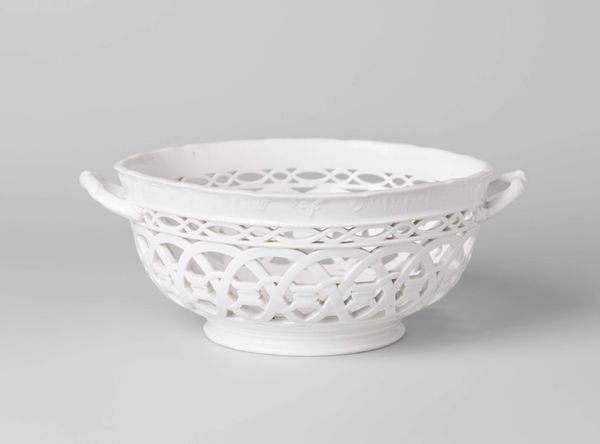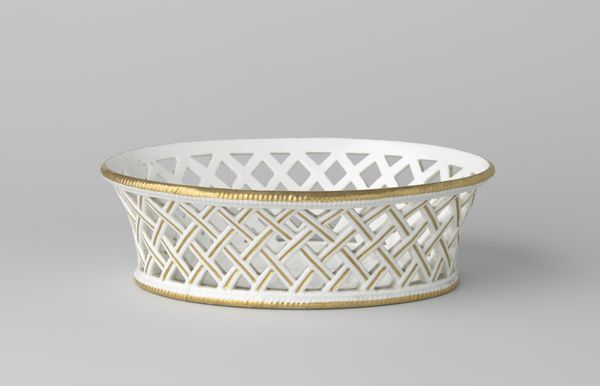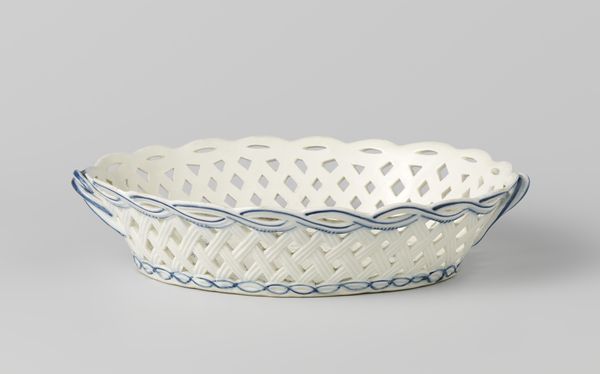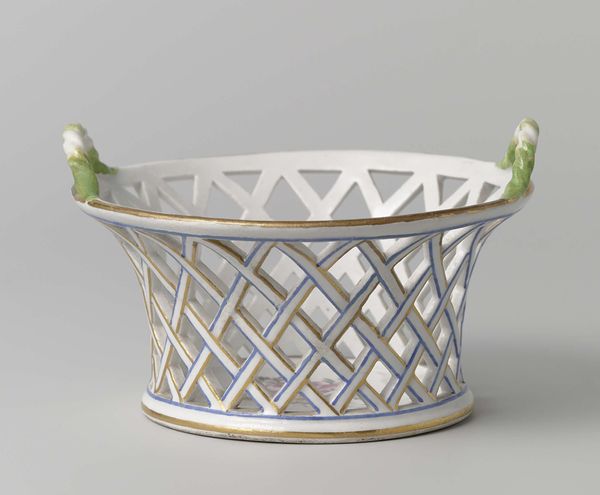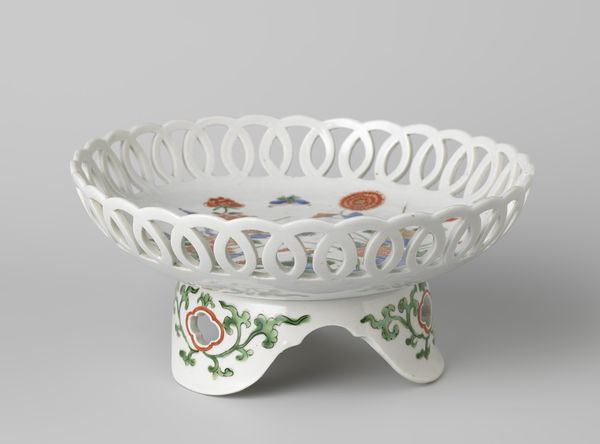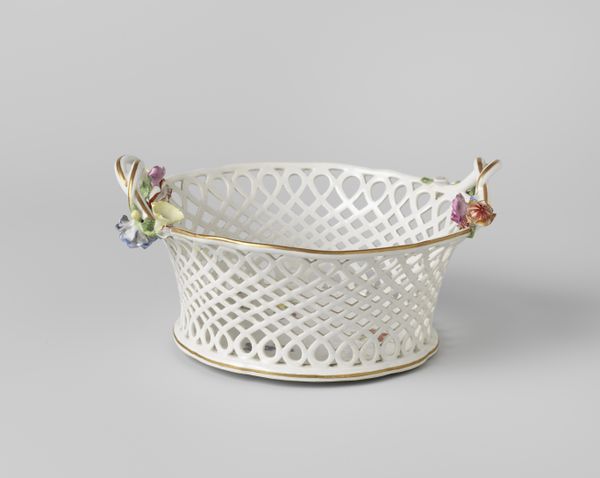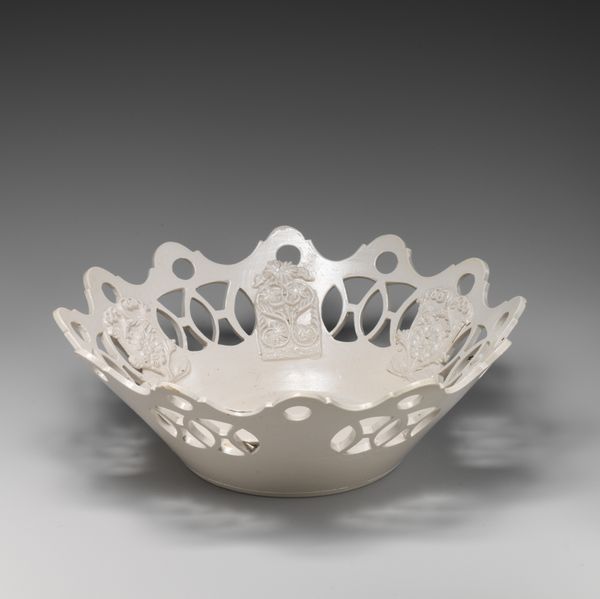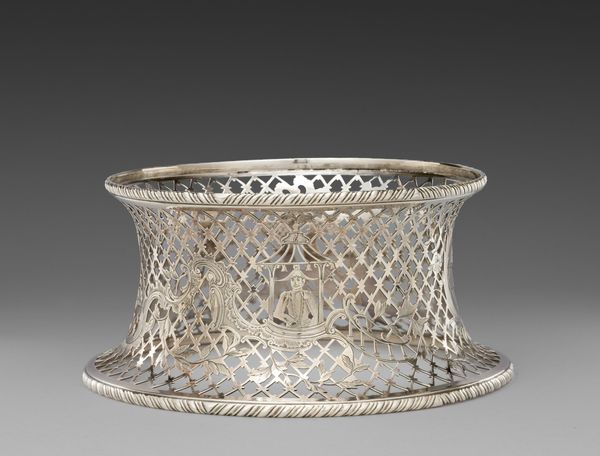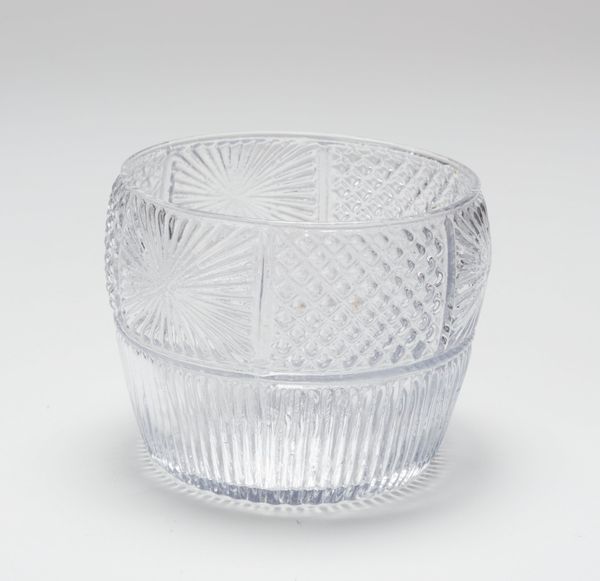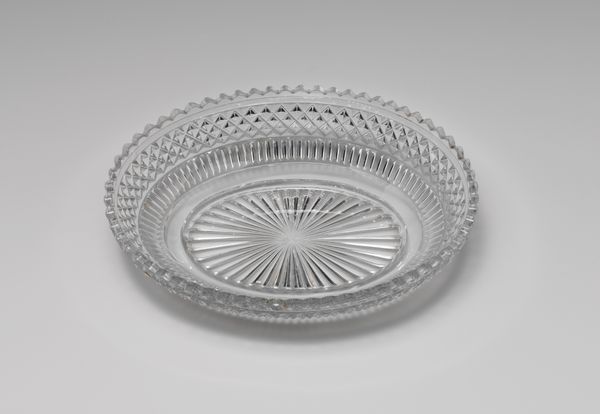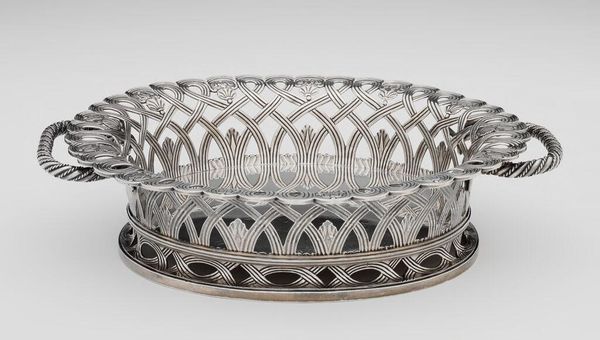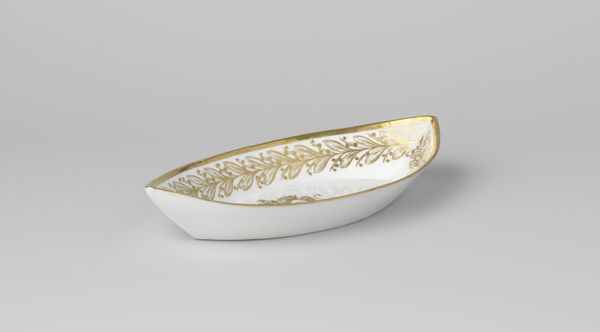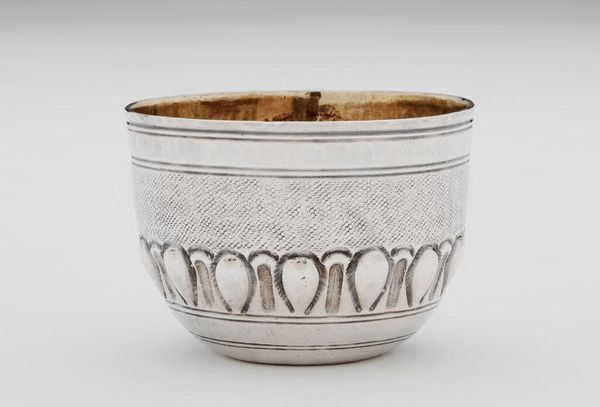
Dimensions: height 3.4 cm, depth 9.8 cm, width 16. cm
Copyright: Rijks Museum: Open Domain
Editor: Here we have a lovely Loosdrecht porcelain lid, or "Deksel, opengewerkt," dating back to around 1778-1782. It feels very delicate and precise with all the lattice and braided handle. What catches your eye in this piece? Curator: The formal arrangement of this porcelain lid exemplifies rococo aesthetics. Consider the interplay between solid and void, achieved through the opengewerkt technique—or openwork, which is what we see here. It’s a dance of positive and negative space that invites visual exploration. Editor: Right, all the little spaces and curves create visual movement. What about the handle; does that have some function, formally speaking? Curator: Precisely! The braided handle acts as a focal point. Notice its placement, it directs the viewer’s eye back down, completing a circuit, which emphasizes the object’s unified structure and compact form. Editor: So the individual elements all contribute to this overall formal structure. Does the fact that it’s porcelain factor into its reading? Curator: The porcelain is integral to its essence. The smoothness of the material and its capacity to maintain such sharpness reinforces the lid's visual purity and the precision in design, contributing to a unified composition of elements. Editor: This emphasis on pure design without the additional narratives that some art possess certainly gives us a different viewing experience. I didn’t realize how many visual relationships were in play. Curator: Indeed. Focusing on the work’s intrinsic formal qualities deepens our understanding and appreciation of the intention in form itself.
Comments
No comments
Be the first to comment and join the conversation on the ultimate creative platform.
